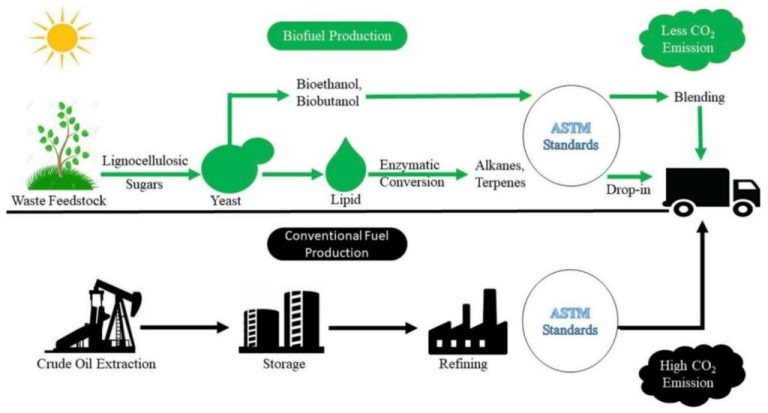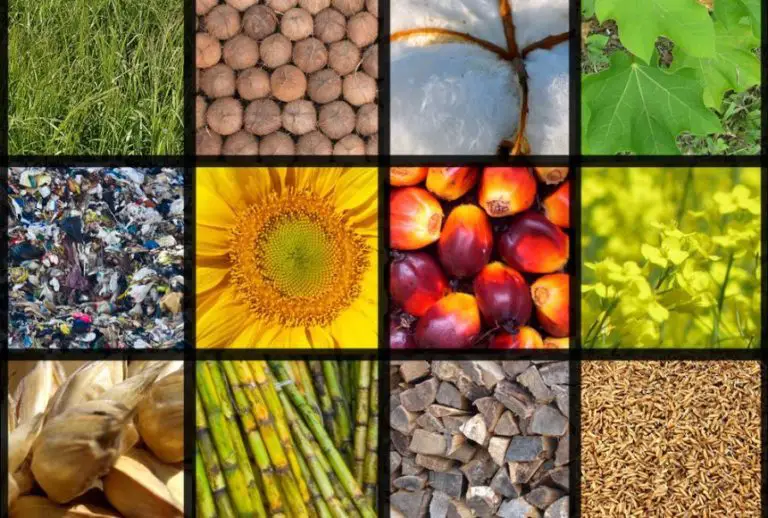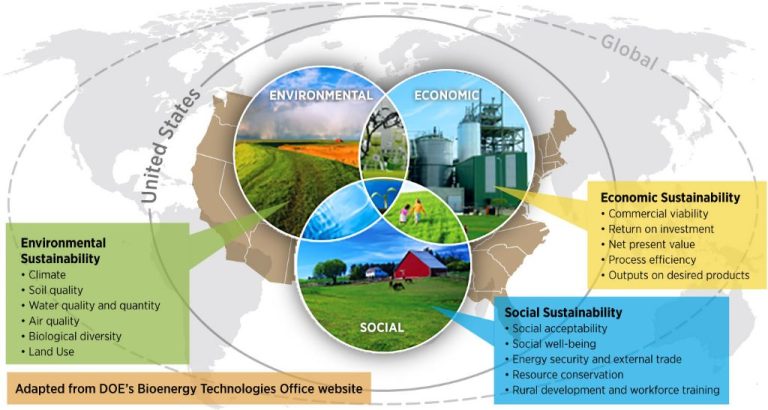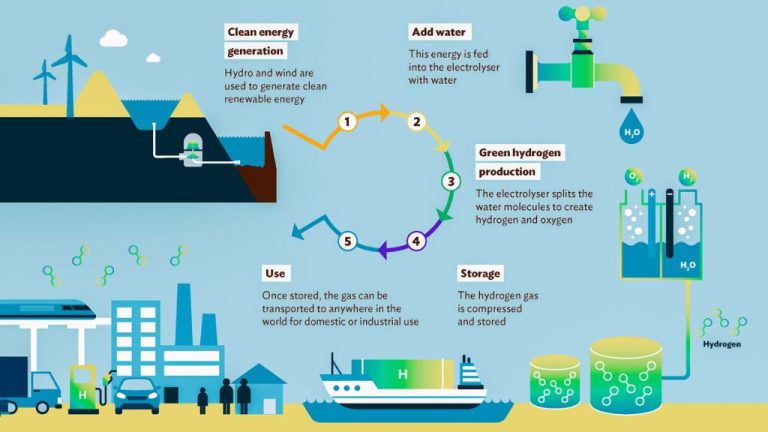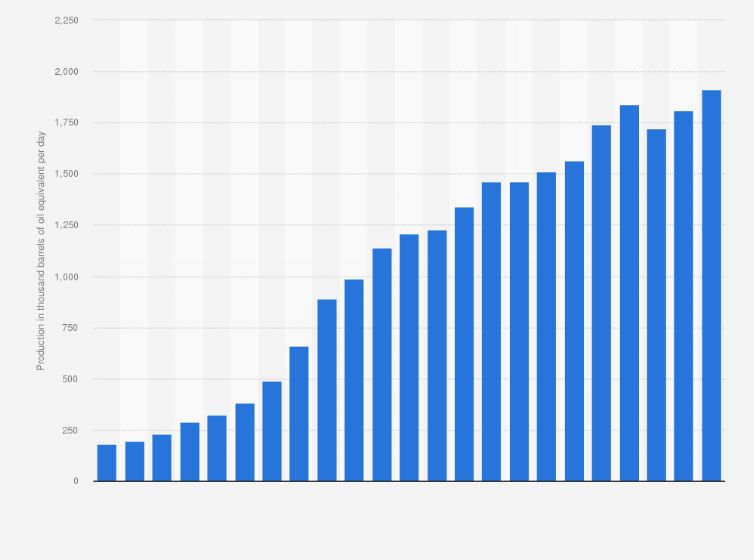What Produces The Most Biomass?
Biomass refers to the total mass of organic matter that is produced by living organisms. It primarily consists of carbon, hydrogen, oxygen, and nitrogen. Biomass is an important renewable energy source that can be used to produce transportation fuels, heat, electricity, and other products that are currently derived from petroleum. Determining which ecosystems and organisms produce the most biomass globally is important for evaluating biomass resources and carbon cycles on Earth.
This article will examine the major biomass producers on the planet and compare their contributions in order to answer the question: What produces the most biomass globally?
Forests
Forests cover about 30% of the Earth’s land area and contain over 80% of all terrestrial biomass. They are estimated to store over 1 trillion tons of carbon, playing a vital role in the global carbon cycle. The total biomass contained in forests globally is immense.
There are differences in biomass between forest types. Tropical forests, such as the Amazon, have the highest biomass density per unit area. They contain about 25% of global forest carbon despite covering only 7-10% of forest area. Temperate forests, like those in North America and Europe, have lower biomass density but make up a larger total forest area. Boreal forests in cold climates, like the taiga in Canada and Russia, cover about 30% of forest area but contain lower biomass due to slow growth in harsh conditions.
Overall, tropical forests contain about 55% of global forest biomass and carbon due to their very high density of vegetation. Temperate forests contain about 25% and boreal forests about 20% of total forest biomass and carbon storage.
Phytoplankton
Phytoplankton are microscopic organisms that live in oceans, seas, and freshwater systems. They form the base of the aquatic food web and play a crucial role in the ocean ecosystem. Phytoplankton use photosynthesis to convert inorganic compounds into organic matter, allowing them to multiply rapidly given optimal conditions. There are thousands of different species of phytoplankton, ranging from small single-celled organisms to large seaweeds.
Phytoplankton biomass and production is immense, owing to their vast numbers and rapid growth rates. While phytoplankton individually are microscopic, collectively their global biomass totals approximately 1 billion tons of carbon. The total photosynthesis by phytoplankton is estimated at between 100-130 billion tons of carbon per year, accounting for at least half of all photosynthetic activity on Earth. Through photosynthesis, phytoplankton produce about 80% of the oxygen in the atmosphere.
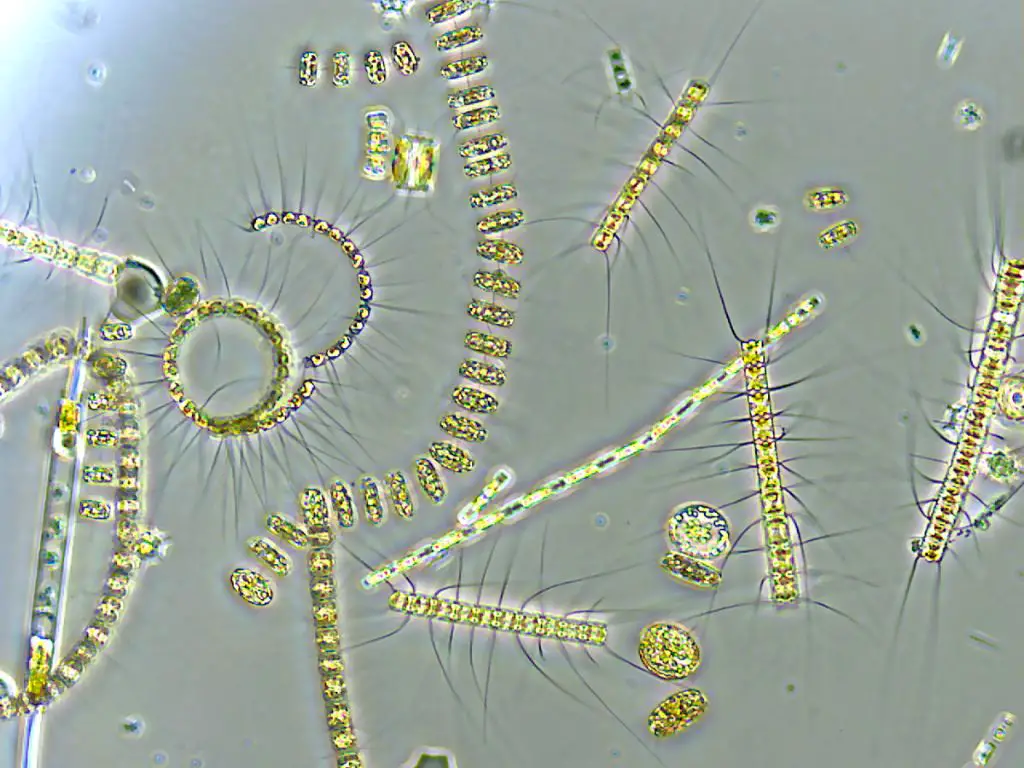
The massive amount of carbon fixed by phytoplankton makes them vitally important for moderating global climate. Their rapid growth absorbs enormous amounts of carbon dioxide from the atmosphere. When phytoplankton die, some of their biomass sinks to the sea floor, effectively sequestering carbon for centuries. Variations in phytoplankton abundance and growth rates over time is believed to have significantly impacted historic atmospheric carbon dioxide concentrations.
Crops
Crops are one of the major producers of biomass globally. The main types of crops include cereals (wheat, rice, maize, sorghum, barley), oil crops (soybean, rapeseed, sunflower), fiber crops (cotton, jute), tuber crops (potato, cassava), and sugar crops (sugarcane, sugar beet).
In terms of annual production, the major crops by tonnage are:
- Sugarcane – 1.9 billion tons
- Maize – 1.1 billion tons
- Rice – 770 million tons
- Wheat – 755 million tons
- Potatoes – 376 million tons
Perennial crops, while producing less biomass per year, can accumulate more over their lifespan. Crops like oil palm can produce 20-30 tons per hectare annually, compared to around 6 tons for annuals like maize. However, total production still favors annual crops due to their larger cultivated area.
Grasslands
Grasslands are large areas of land covered predominantly by grasses and herbaceous plants, with very few or no trees. They cover about a quarter of the world’s land and are found on every continent except Antarctica. The major types of grasslands include temperate grasslands, tropical grasslands (savannas), and shrublands.
Temperate grasslands, such as the prairies of North America, the pampas of South America, the steppes of Eurasia, and the veldts of South Africa, tend to occur in regions with moderate rainfall between forest and desert biomes. Tropical grasslands have a distinct wet and dry season, common animals like elephants and giraffes, and are common in Africa, Australia and South Asia.
Grasslands are highly productive ecosystems and store massive amounts of carbon, especially in their rich soil organic matter. This makes them important carbon sinks. Temperate grasslands may store over 30 tons of carbon per hectare, while savannas store 29 tons of carbon per hectare on average. The extensive root systems of grasses contribute to soil organic carbon.
However, grasslands are under threat from land conversion for agriculture, which releases much of their stored carbon into the atmosphere. Maintaining grasslands is important for climate change mitigation. Sustainable grazing practices can preserve grasslands while providing economic benefits.
Mangroves
Mangroves are salt-tolerant trees and shrubs that grow in tropical and subtropical coastal regions. They form dense forests along coastlines, estuaries, and rivers. Mangroves are found in over 118 countries and cover an estimated 137,760 square kilometers globally.
Mangroves have the ability to produce large amounts of biomass and store significant amounts of carbon in their biomass and soils. The total biomass contained in mangrove vegetation has been estimated at 4.9 Pg C globally. Mangrove soils also contain very large carbon stores, estimated at 6.4 Pg C in the top 1 meter. This means mangrove ecosystems have the potential to store over 11 Pg C, making them one of the most carbon-rich forests in the world.
On an area basis, mangroves have been found to store over 1,000 tonnes of carbon per hectare on average. Their high productivity and efficiency in trapping and storing carbon is related to their location in tropical coastal zones and ability to grow in oxygen-poor soils. This makes mangroves effective carbon sinks that play an important role in climate change mitigation.
Algae
Algae, including seaweeds, are an incredibly productive and sustainable biomass resource. Though they account for less than 1% of global plant biomass, algae’s rapid growth allows them to produce nearly 50% of the oxygen we breathe. The macroalgae that make up seaweeds are some of the most productive large plants on Earth. Global seaweed aquaculture has expanded over 10 fold in recent decades to over 30 million tons annually. Seaweeds require no freshwater, arable land, fertilizers, or pesticides to grow.
Seaweeds are increasingly cultivated for use as biofuels. The high carbohydrate content of brown macroalgae like kelp can be converted to biomethane through anaerobic digestion. Researchers estimate that if just 1% of the continental shelves were used for kelp farming, they could provide enough biomethane to meet global transportation fuel demand. With sustainable farming, seaweed biofuels could provide abundant renewable energy with minimal environmental impact.
Comparison
When comparing the major biomass producers globally, phytoplankton stand out as generating the most overall biomass. Phytoplankton are microscopic algae that live in ocean and freshwater ecosystems. They account for about 50% of all global primary production, far exceeding that of forests, croplands, grasslands, and other producers.
Terrestrial forests generate the second highest amount of biomass. Forests cover about 30% of the Earth’s land area and produce massive amounts of plant matter through photosynthesis. The humid tropical forests alone account for 34% of terrestrial primary production.
Following forests, marine algae like seaweed and kelp contribute significantly to global biomass as well. Algae inhabit coastal regions and can grow at rapid rates due to access to sunlight and nutrients. Certain algal species have very high rates of primary production.
In comparison, croplands generate only about 3% of terrestrial biomass despite taking up 11% of the world’s land area. Crops are harvested annually so their biomass does not accumulate over time. Grasslands are more extensive than croplands but grow slower, contributing about 5% of terrestrial biomass.
Overall, the great productivity of microscopic phytoplankton in the oceans dwarfs that of even the most extensive terrestrial ecosystems like forests and grasslands. This reveals the immense importance of marine primary producers to global biomass and food webs.
Importance
Biomass is an important renewable energy source that can help reduce our dependence on fossil fuels. Unlike coal, oil, and natural gas, biomass can be replenished in a relatively short period of time. The production and use of biomass also has important sustainability considerations.
On the positive side, biomass can be considered carbon neutral because the carbon released when biomass is burned is equal to the carbon absorbed during plant growth. This helps reduce greenhouse gas emissions compared to fossil fuels. Additionally, biomass can provide an income source for farmers and rural communities by providing a market for agricultural residues and dedicated energy crops. If managed properly, biomass production can also benefit ecosystems by providing habitat and preventing soil erosion.
However, there are sustainability concerns around large-scale biomass production. Intensive farming practices and monocultures may negatively impact biodiversity, soil health, and water quality. There is also debate around the carbon neutrality of biomass if harvesting levels are unsustainable or result in changes in land use. Careful planning is required to ensure biomass production does not compete with food production or land conservation efforts. The scale, location, and practices of biomass production must be managed responsibly.
Overall, biomass is a versatile renewable resource that can provide energy, products, and ecosystem services. With responsible production and use, biomass can play an important role in the transition to a more sustainable future.
Conclusion
This article has explored the different organisms and ecosystems that generate large amounts of biomass globally. We looked at forests, phytoplankton, crops, grasslands, mangroves, and algae as major biomass producers.
Of all these, our analysis found that phytoplankton in the world’s oceans generate the most biomass overall. Though tiny individually, phytoplankton collectively make up the largest total biomass on Earth. Their photosynthetic activities produce over half of the world’s oxygen, making them enormously important for life on the planet.
In summary, while forests, crops, and other organisms produce significant biomass, marine phytoplankton take the top spot as the largest biomass generator globally due to their sheer abundance in ocean ecosystems.

